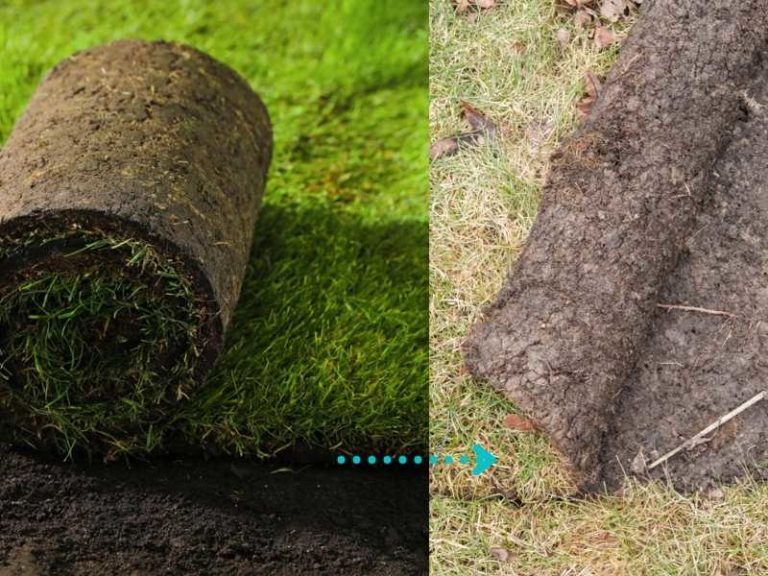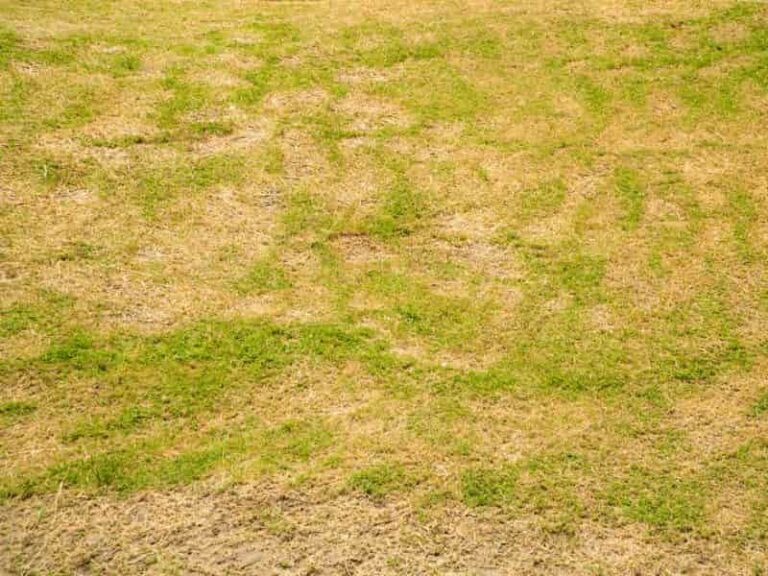How to Treat Lawn Fungus Naturally
A waterlogged lawn is a conducive breeding ground for fungi. While your lawn may look lush and green, eventually, it’s almost inevitable, that you may need to apply natural fungal control measures, as part of your lawn care routine.
However, the success of fungi control using natural methods depends on the severity of the infestation, grass type, and your routine lawn care practices.
Signs of lawn fungus damage
Naturally, your lawn is filled with fungi (living microscopic organisms) and spores. Some are beneficial as they add nutrients to your lawn, while others can be destructive. It takes susceptibility and a favorable environment for fungus to erupt in lawns. Watch out for the following signs if you suspect that your lawn has a fungal disease, not any other problem:
- Darkened patches that look wet and slimy: Slime molds that cause can be found in almost all lawn soils. They may appear on decaying logs, mulch or fallen leaves. A lawn with excessive thatch is also likely to develop these molds.
- Brown patches commonly found in cool-season grasses. A fungal infection starts off with yellowed leaf blades, which turn brown overtime.
- Thread–like coatings on and around turfgrass blades, appearing gray, black or pink powdery.
- White, yellow or brown patches or rings whose diameter increases over time especially if left untreated.
- Grass blades with tattered patches.
How to get rid of lawn fungus naturally
Once a fungus infests your lawn, it will quickly spread, making it daunting to control. Chemical treatments like fungicides might help eradicate the disease. However, they also create problems like soil pH imbalance, when administered incorrectly. Going natural is not only cost-effective but also promotes healthy grass that can recuperate faster should a fungus infestation occur in the future.
Here are natural ways to treat lawn fungus:
1. Naturalize the infected parts with groundcovers
Some wild plants like dandelions are drought-resistant and hardy. They have better coping skills for dealing with fungus. Planting these groundcovers in lawn areas that are susceptible to fungal infestation will help keep the infection at bay. It’s the symbiotic-based relationship between grass and flowers that control the fungus.
Follow these steps when planting the groundcovers:
Step 1: Mark the area you want to plant with flour
Once you’ve identified which part you want to introduce the groundcover, mark it with flour. Remove the top layer of sod if you want to start planting sooner. Add your layers on top of the grass.
Step 2: Build the layers using a six-sheet newspaper
Spread the newspaper sheets and saturate them with water. This helps it to stay in place as you spread 3-6 inches of compost. For summer months or periods of long dry spells, add some water to the layers to keep it moist.
Step 4: Edge the bed perimeter
Edging the flowerbed perimeter using decorative materials like bricks helps keep turf from spreading into it. The bed may take between three and six months to develop. You can plant the flowers in a pot first, then transplant them when the bed is ready. You’ll know it’s ready if the newspaper or turf is gone. Using a gardening trowel to install to dig the soil and sow the seeds.
2. Aerate your yard annually
Air in the lawn’s soil allows water to move more freely, allowing the flow of nutrients. By aerating your lawn, you’re allowing your lawn to breathe freely, controlling the fungus. If the soil is compacted and you suspect it could be the reason fungus is invading your lawn, use these tips to aerate it:
- Use a garden fork to poke the surface down to at least 30mm. Use the back-and-forth spiking method. Avoid aerating in extremely dry or wet soil. Do a soil moisture test on the top 1-inch using your fingers. During the rainy season, soil gets wet most of the times. Therefore, it’s best if you waited until the rains go down to aerate it.
- Use a slitter (a gardening tool with a series of blades on a roller) to spike small air spaces in the soil. The soil should neither be too wet or dry.
3. Mow the diseased parts
Grass fungus spreads quickly, which is why mowing is a suitable solution to control it. When mowing, pay attention to the infected parts. Remove the grass clippings, fallen leaves, or debris that could be sitting on your lawn. Don’t leave the grass clippings as they still carry live fungi that may spread to the rest of the grass.
On the other hand, mowing (as a fungal control method) the diseased parts is only effective if the infestation is still fresh. Prolonged (more than a month) fungus infestation might need other control measures before mowing.
4. Increase the soil’s pH using weak baking soda
Baking soda (Sodium bicarbonate) is a safe remedy for controlling fungus in your lawn since it is alkaline-based. This helps increase the soil’s pH, reducing fungus ability to keep thriving in the grass. Here’s how to apply it:
You’ll need the baking soda, water, and spray bottle
- Mix one tablespoon of baking soda with a gallon of water in a spray bottle.
- Spray the solution on affected areas.
- Repeat this after every three days until the fungus disappears.
Remember not to go overboard with the baking soda-water solution as it can increase the soil pH level, more than expected. Doing so may compromise the soil’s ability to recover should a disease erupt again.
5. Apply neem oil to kill the fungus
Neem oil for fungi control in lawns works best when 2 oz of it is diluted with 1 gallon of water. Spray 2.5 gallons of the neem oil solution per 1,000 sq. ft. of lawn. For the best results, apply this solution 3 to 4 times within an interval between seven and fourteen days.
Can grass fungus go away on its own?
When left uncontrolled, the fungus will spread to the rest of the lawn, destroying the efforts you’ve put to ensuring your lawn stays healthy. Consequently, it won’t disappear or reduce unless you treat it naturally, organically or chemically. Treating your lawn for fungi should start as soon as you notice the unusual signs pointing to an infestation.
Remember, beneficial fungi are a key ingredient your lawn needs for healthy growth. That means fungi will remain in the soil even after successful treatment.
Prevention
To ensure fungi doesn’t invade your lawn, apply the following preventative measures:
Water your lawn early in the morning hours
If you’ve been waiting until the last minute of the day to water your lawn, the soil will retain the water throughout the night. Harmful fungi tend to grow and multiply quickly in waterlogged soils. It needs moisture to survive.
The only way to ensure the soil absorbs enough water to encourage root growth and encourage photosynthesis is by watering your lawn in the early morning hours. It’s during this period that the sun isn’t extremely scorching.
Use the sharpest mower blade to mow your lawn
A blunt mower blade doesn’t make sharp cuts on grass. If your lawn already has fungus infestation and you decide to use a mower with blunt blades, grass blades will create an open ground for the fungus to enter. Since mowing is part of the natural fungi control method, it would be best if you used a device with sharper blades.
Dethatch the lawn when there’s need
The presence of excessive thatch, a layer of organic matter, in grass signifies soil pH imbalance or lawn care malpractices. Naturally, thatch should be only ½ an inch. Too much of it robs the grass of nutrients, sunlight, and water. Upon close examination, you’ll notice they sit between the soil top layer and crown of the grass. As long as microbes aren’t enough to eliminate organic matter, the fungus will attack the lawn.
The thatches attract weeds, particularly in spring, which is why you should plan your dethatching activity in fall. It works best using a thatching machine or gardening rake to keep them to a minimum. Alternatively, you can apply organic matter to keep them at bay.
Apply calcium to lower pH
The right pH balance for lawn soils should range between 6.2-6.8, but that doesn’t mean they don’t need calcium. Calcium helps the grass to resist diseases (fungi included), absorb other micro-nutrients, and build strong cell walls. If you test your soil for calcium and it indicates a deficiency, apply calcium immediately.
Mix the grass species
If your lawn has one species of grass like St. Augustine, it is a vulnerability for fungal infestation and spread increases. Part of the remedy to controlling them is by mixing grass species. However, ensure the turf species you’ve chosen have similar growing conditions. For example, if you live in a region favoring the Kentucky Bluegrass growing conditions, mix it up with tall fescue or ryegrass.
Apply the right lawn care practices
Fungi thrive in moist environments and can spread quickly when lawn care malpractices like under/over-fertilization and overwatering. Once you’ve successfully eliminated them, apply these two fungi preventative tips:
- Only water your grass in the morning hours and if the soil feels dry. Overwatering makes water to stay on the leaf surface for too long, providing a conducive environment for fungi.
- Replenish your lawn with nitrogen during heavy rains. Too much rain leaches away nitrogen and can lead to turf yellowing and weakening.



